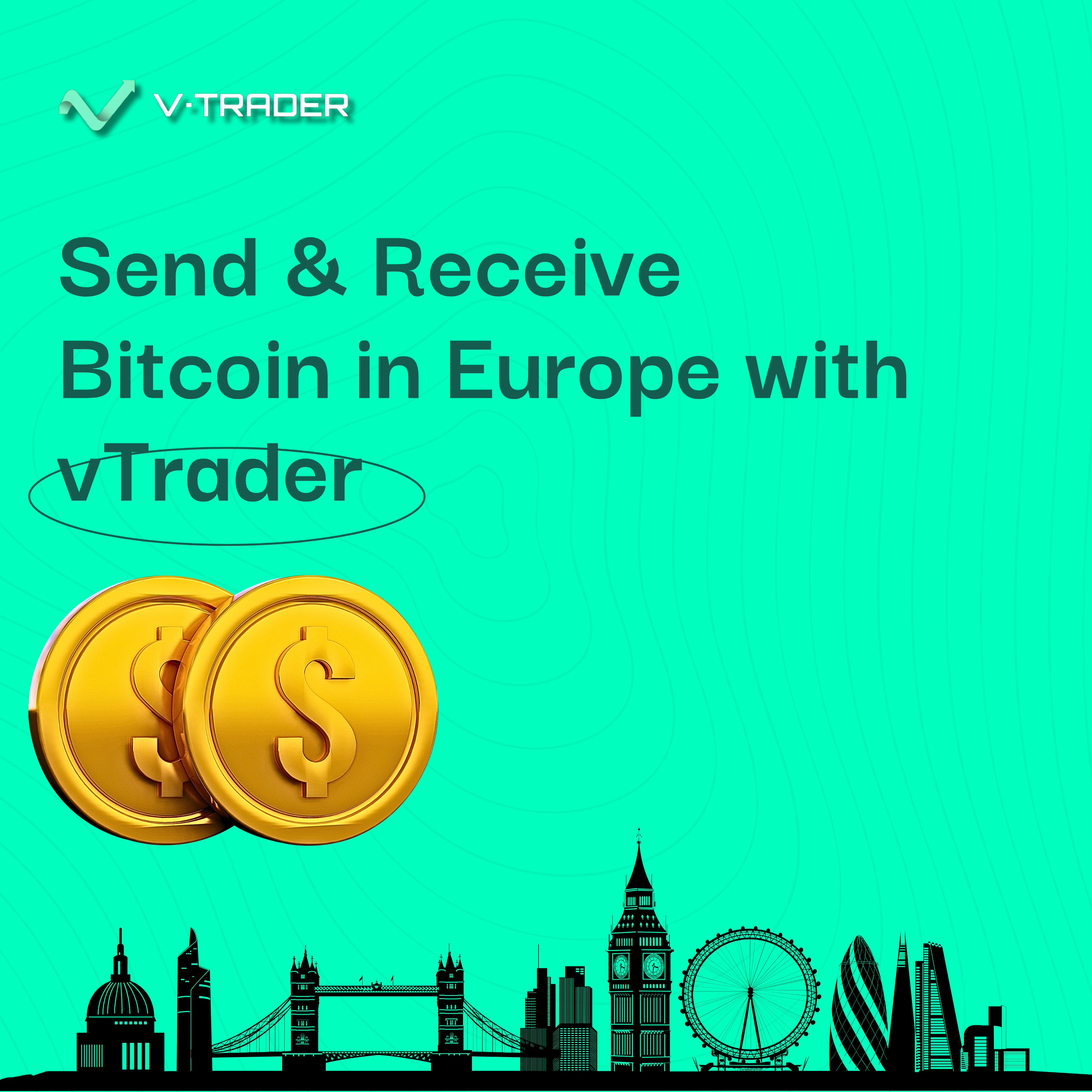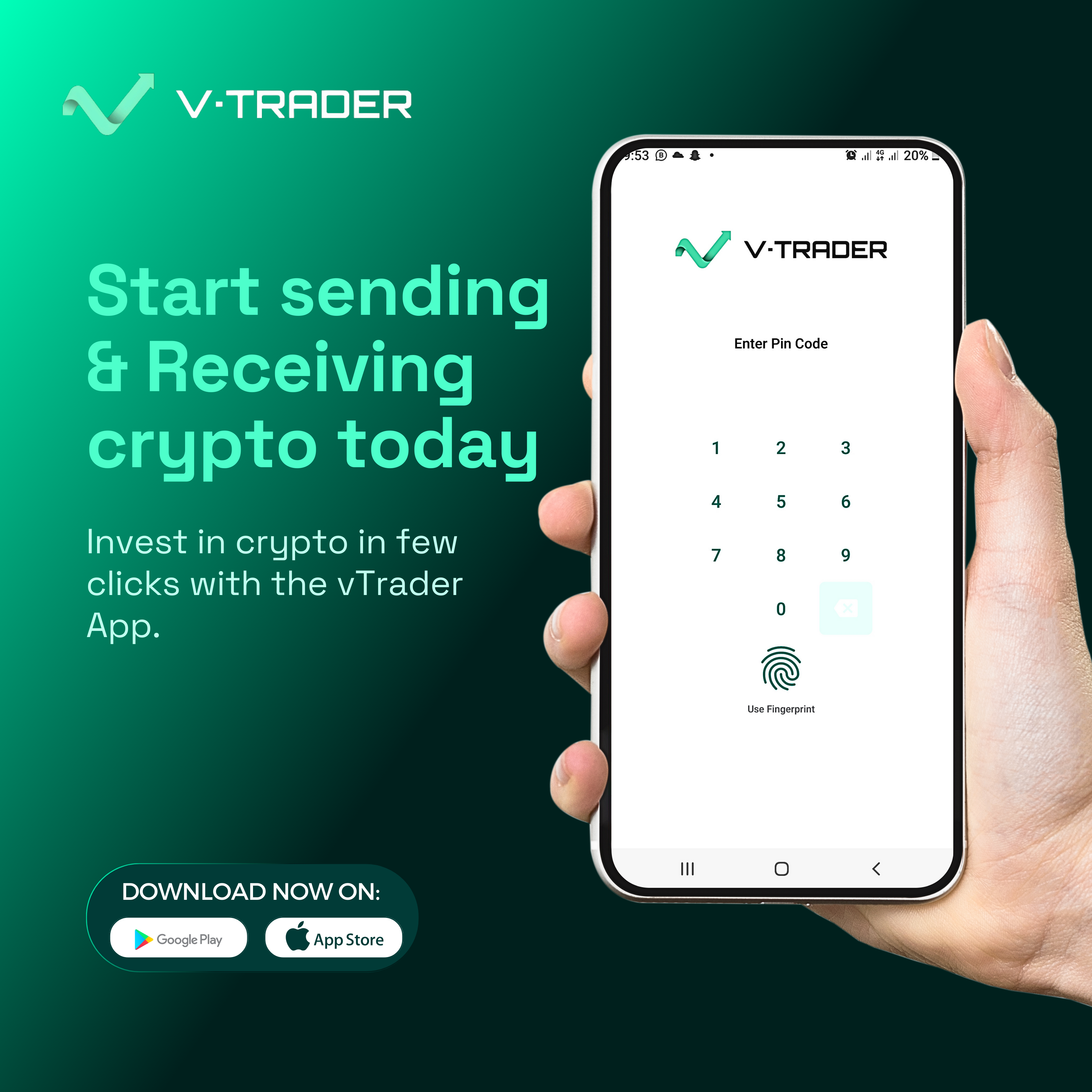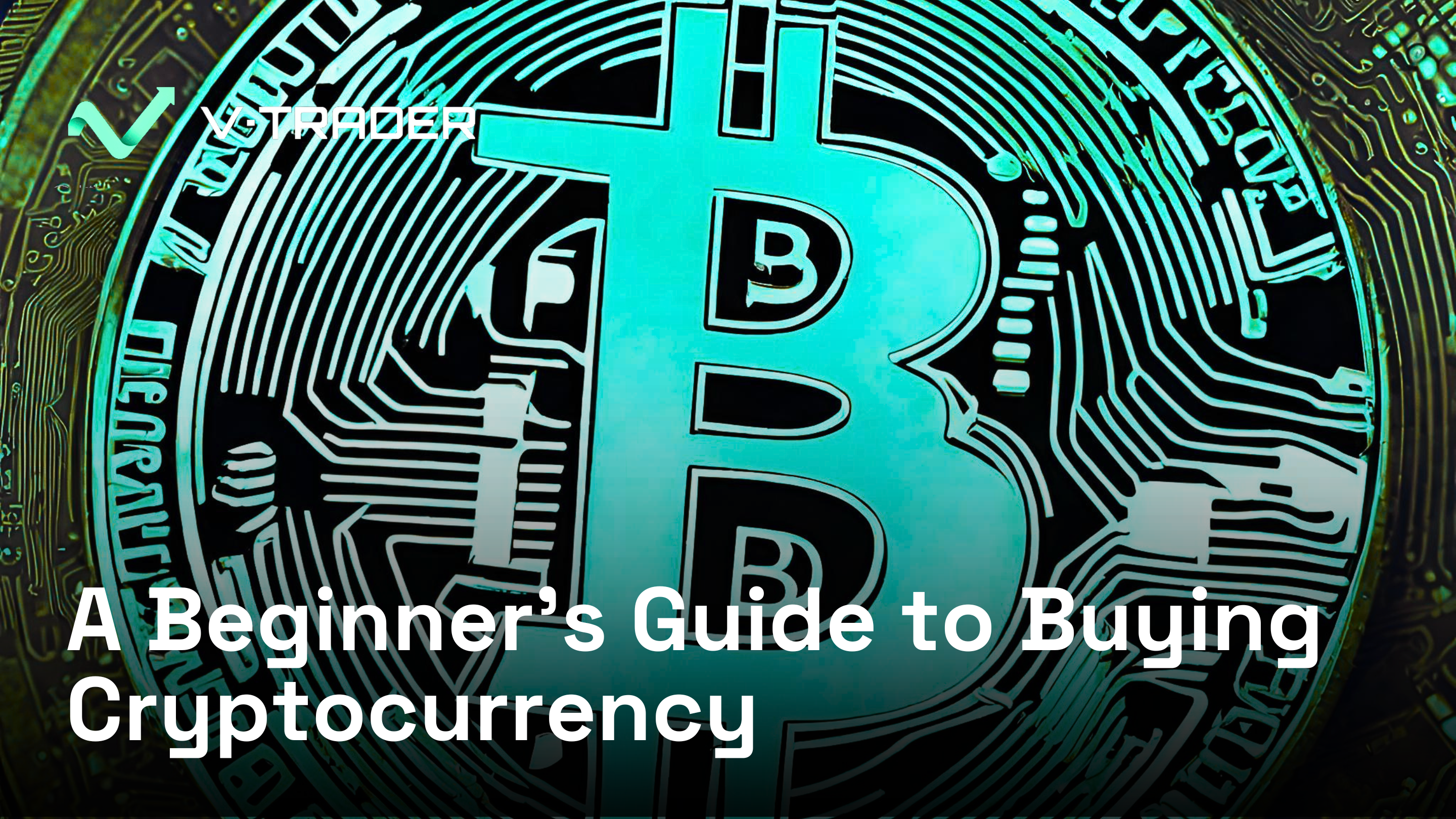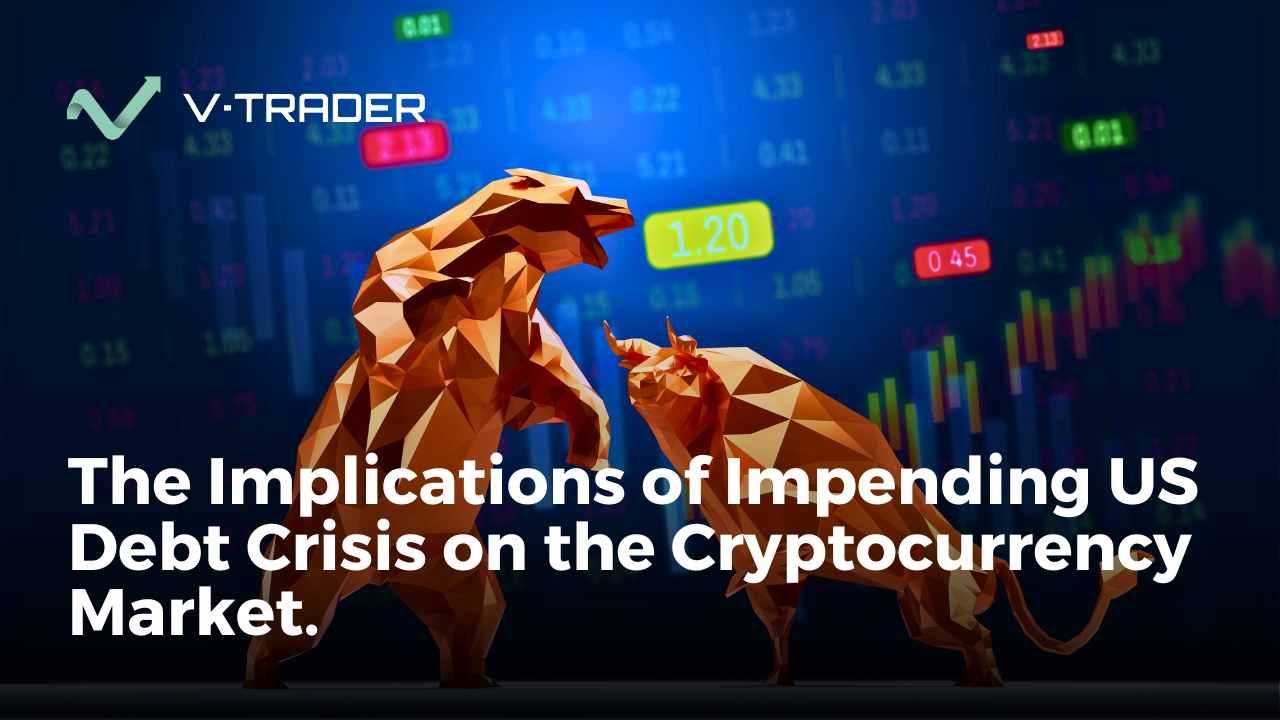Imagine a world where your financial future is in your own hands. Picture a space where you can invest your money without relying on banks or traditional currencies. This is the world of cryptocurrency.
In this article, we explain how to buy crypto for beginners and show you the best start to cryptocurrency trading using the vTrader platform. We share real-life examples and practical advice so you get the big picture as you step into this new realm.
Whether you want to invest in Bitcoin or explore altcoins like Solana, this guide will help you build a strong digital portfolio with minimal risk.
Essential Steps Before Buying Cryptocurrency
Before you make your first transaction, it is important to lay a solid foundation. Educate yourself on how cryptocurrency works and the technology behind blockchain. In order to keep the article short, we won’t go into the nitty-gritty of the blockchain.
Know that digital currencies are stored as assets on decentralized networks and their prices can change quickly. Understand the risks and never invest more money than you are prepared to lose.
By setting these simple rules and learning about popular cryptocurrencies, you prepare yourself for a smarter investment journey.
Deciding Which Crypto to Buy
The first decision for investors is choosing which crypto coins to buy. Many beginners start with popular cryptocurrencies such as Bitcoin and Ethereum. These coins are well known and offer a strong reputation.
However, altcoins can also be attractive as they may serve unique purposes and deliver higher returns. Evaluate each coin by looking at its use case in the real world and the community behind it. Consider factors like market capitalization and the history of the asset. Will their business model succeed or not, does it bring value?
In addition to fundamental analysis, technical analysis trading can provide valuable insights. This approach involves studying the price charts and trading volume to identify trends and potential entry points.
For example, some traders examine candlestick patterns and moving averages to gauge the strength of a coin’s upward or downward movement. Others use tools like the relative strength index (RSI) to spot overbought or oversold conditions and open trades based on that data.
By combining technical analysis with an understanding of each coin’s unique value proposition, investors can make more informed decisions on which assets to include in their portfolios.
Selecting a Cryptocurrency Exchange
A reliable crypto exchange is essential for a smooth trading experience. Exchanges are platforms where you buy and sell digital assets. When selecting an exchange, it is important to consider factors such as ease of use, security, and payment options.
Centralized Exchanges
Centralized exchanges are managed by companies that offer a secure and controlled trading environment. These platforms provide robust customer support and comprehensive user education to help you navigate the world of digital assets.
They support a range of payment methods, including credit cards, debit cards, and bank transfers, ensuring that you have multiple options when depositing money. vTrader is a prime example of a centralized exchange that caters to beginners and experienced investors alike.
The vTrader platform offers an intuitive user interface that guides you through the process of buying cryptocurrency step by step. vTrader delivers real-time market data, advanced order options, and integrated wallet solutions that allow you to manage your assets easily.
Decentralized Exchanges
Decentralized exchanges operate without a central authority and allow peer-to-peer transactions. They offer greater privacy and control over your funds. However these platforms may be less intuitive for beginners.
While decentralized exchanges have their benefits they can involve more complex security measures. New investors are advised to start with a centralized platform like vTrader before exploring decentralized options as they become more comfortable with crypto trading.
Setting Up Your Cryptocurrency Wallet
Once you decide which coins to buy and have chosen an exchange, you need a secure place to store your digital assets. A cryptocurrency wallet is a digital tool that holds your coins and private keys. Wallets come in two main types: hot wallets and cold wallets. Each offers a different level of security and convenience.
Hot Wallets: Hot wallets are connected to the internet and are ideal for frequent transactions. They allow investors to quickly access their coins for trading on platforms.
While hot wallets are convenient, they carry a higher risk of online threats. For daily trading and smaller amounts of money, hot wallets are a perfect choice if you follow good security practices.
Cold Wallets: Cold wallets store your cryptocurrency offline. This method of storage is more secure and is recommended for holding large amounts of digital assets over long periods.
Hardware wallets are a common example of a cold wallet and offer protection against online attacks. For investors looking to protect their long-term portfolio, it is wise to transfer funds from an exchange to a cold wallet once you are ready to hold your coins for an extended period of time.
Step-by-Step Guide to Buying Cryptocurrency
This straightforward process shows how easy it is to buy crypto in a simple and secure manner.
- Creating And Verifying Your Exchange Account
The first step is to create an account on a reliable exchange such as vTrader. Sign up with your personal details and follow the instructions to verify your identity. This process helps ensure the security of your account and is required for regulatory compliance. Once your account is active, you are ready to begin trading.
- Depositing Funds (Bank Transfer, Credit/Debit Card, Etc.)
After your account is verified, the next step is to deposit money. vTrader offers multiple payment methods including bank transfers and debit card transactions. Choose the payment option that is most convenient for you. This deposited money becomes the asset you will use to buy cryptocurrency.
- Placing Your First Cryptocurrency Order
With your funds in place it is time to make your first order. Navigate to the trading section on vTrader and select the coin you wish to buy. Whether you are interested in Bitcoin, Ethereum or other altcoins the platform displays the current price of each coin. Enter the amount you want to purchase and confirm the transaction.
- Transferring Cryptocurrency To Your Wallet
For enhanced security it is a good practice to transfer your newly purchased coins from the exchange to your personal wallet. You may choose a hot wallet for quick access or a cold wallet for increased protection.
Transferring your digital assets ensures that you retain control over your private keys and further reduces the risk of hacking.

Common Mistakes To Avoid
Avoiding common pitfalls is essential because even minor errors in research, security, or emotional decision making can lead to significant setbacks on your cryptocurrency trading journey.
Over-Investing Without Adequate Research
A common mistake new investors make is to put too much money into a cryptocurrency without fully understanding it. Take the time to research cryptocurrency, study market trends and the underlying technology for best results.
Ignoring Security Best Practices
Security should never be compromised. Enable extra security measures like two-factor authentication for peace of mind. Ensure that your wallet, whether hot or cold, is kept secure. Store your keys in a safe and reliable location.
Neglecting this basic security can expose your coins to potential threats and needless risks. It is always better to be cautious than to regret a loss later.
Falling For Cryptocurrency Scams
The promise of quick gains can sometimes lure investors into scams. Always verify the legitimacy of any project or investment opportunity before parting with your money. Do your own research and rely on reputable platforms and resources to safeguard yourself from fraudulent schemes.
Frequently Asked Questions
What Is The Safest Way To Buy Cryptocurrency?
Using trusted crypto exchanges like vTrader that emphasize security is currently one of the safest ways to buy cryptocurrency. These platforms protect your assets and personal information with advanced security features.
How Much Should Beginners Invest In Cryptocurrency?
Beginners should start with an amount that they are comfortable losing. As a beginner, you’re likely to make mistakes, and remember that investing in cryptocurrency carries risks. Start small and gradually increase your investment as you gain more experience and knowledge.
Are Cryptocurrency Investments Taxed?
In many regions, cryptocurrency investments are taxed. It is important to consult with a tax professional or research your local regulations to ensure you meet all your tax obligations.
Can I Buy Partial Cryptocurrencies?
Yes, investors can buy fractions of a coin. This means you do not have to purchase an entire Bitcoin or Ethereum coin. Divisibility makes it possible to invest any amount of money according to the current price of the cryptocurrency.
Step Into Your Digital Future

Your journey into cryptocurrency trading is a gateway to a brighter financial future. With clear steps to educate yourself, all that’s left is to choose the right coins, and use secure platforms like vTrader, and the process becomes both accessible and rewarding.
vTrader offers a smooth and intuitive experience that caters to beginners and seasoned investors alike. Its secure platform supports various payment methods, from banks to debit card transactions, ensuring every transaction is safe and efficient.
Now is the best time to embrace this exciting new era and build a diverse portfolio of digital assets. Visit vTrader today and discover how to buy crypto in a secure and straightforward way.

Steve Gregory is a lawyer in the United States who specializes in licensing for cryptocurrency companies and products. Steve began his career as an attorney in 2015 but made the switch to working in cryptocurrency full time shortly after joining the original team at Gemini Trust Company, an early cryptocurrency exchange based in New York City. Steve then joined CEX.io and was able to launch their regulated US-based cryptocurrency. Steve then went on to become the CEO at currency.com when he ran for four years and was able to lead currency.com to being fully acquired in 2025.


